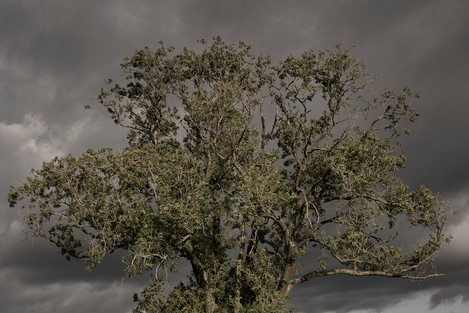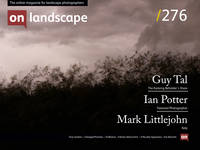Featured Photographer

Ian Potter
Ian Potter is British; born 1967. He is a landscape photographer and artist rep, based in Oxfordshire, England.

Michéla Griffith
In 2012 I paused by my local river and everything changed. I’ve moved away from what many expect photographs to be: my images deconstruct the literal and reimagine the subjective, reflecting the curiosity that water has inspired in my practice. Water has been my conduit: it has sharpened my vision, given me permission to experiment and continues to introduce me to new ways of seeing.

So often, when we go out, we look afar. It took the restriction of the first Covid lockdown in 2020 and circling the same loop of the lane that I’d walked for more than a decade for me to really start noticing the life and lines within the area between the macadam and the drystone wall. Consequently, I was intrigued when I came across Ian’s series ‘Beside Me’, which majors on the vegetation that is next to us. That’s not to say he doesn’t look beyond or above.
Ian describes his photography as “a personal exploration into landscape, stemming from a desire to reignite his own creativity in mid-life while trying to find a new way of capturing landscape, with a focus on how we as humans often inadvertently affect the aesthetic of our surroundings through commerce and other activity.”
Would you like to start by telling readers a little about yourself – where you grew up, what your early interests were, and what led you to study and do for work?
I live in Wallingford, Oxfordshire, a small market town set within the open countryside beyond The Chilterns as you leave London to the west. It is here in around 2016 that I first started to think about and practice my landscape photography. I was raised in Sussex and spent most of my youth either cycling with friends through the local forests or dodging the headcases at school (pupils and teachers alike). The town of Horsham was, and probably still is, one the UK’s most ardent Conservative strongholds, with little time for the arts, let alone finance for it.
I was around 15 years old when I went with my mum to see a Bill Brandt exhibition at the National Portrait Gallery, which for me was a big deal. I remember being totally blown away by it. Until that point, photographs had only been things I’d seen in books or newspapers or in the family album. Suddenly they were printed in large frames in a grand gallery. My Grandparents gifted me my first camera, an Olympus Trip, and my parents allowed me to turn my bedroom into a darkroom with black walls, black-out panels for the windows, an enlarger and all the kit for developing film and making black and white prints. It probably wasn’t the healthiest of environments to sleep in, with trays of chemicals on the shelf next to my bed. I learned the basics with the help of one of my secondary school teachers who ran a photography club; I developed and printed my own work and won a few local competitions.
After surviving the daily battles of comprehensive school and emerging with a pretty basic set of qualifications, things soon changed for the better. I went on to study A Levels at the local sixth form college, and it was here at Collyers where I first started to feel comfortable about enjoying and exploring the arts surrounded as I was by a brilliant mix of like-minded peers, many of whom are still friends now, and some inspirational teachers.

